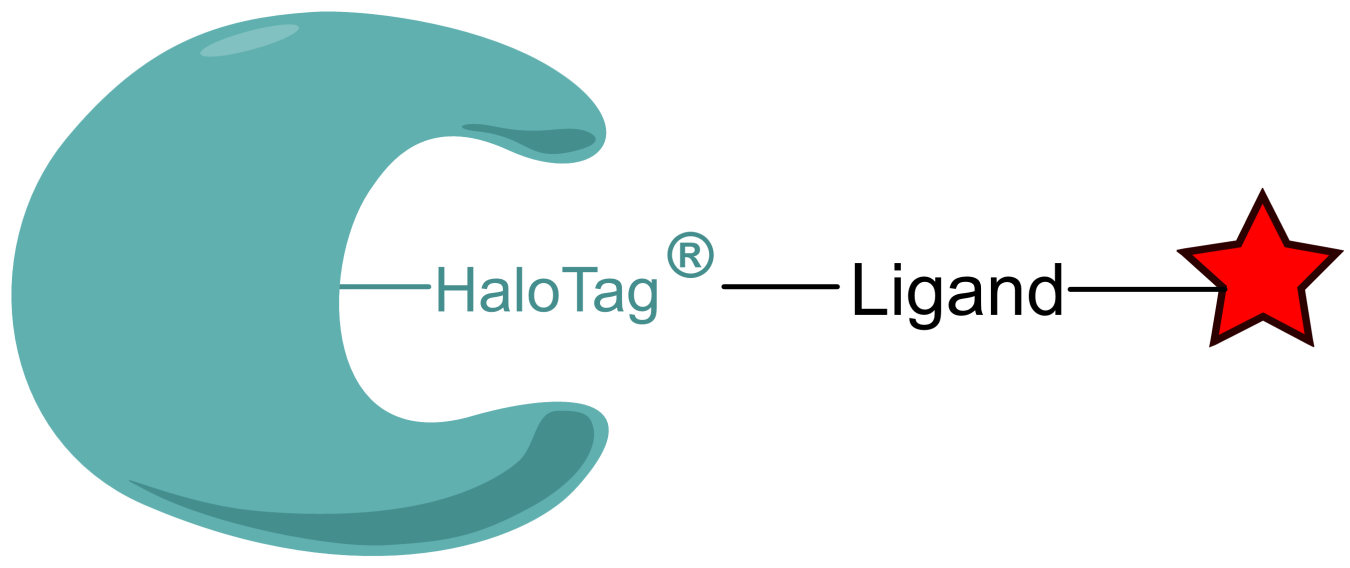Welcome to Iris Biotech
For better service please confirm your country and language we detected.
confirm selection

For better service please confirm your country and language we detected.

Thank you very much for your interest in our products. All prices listed on our website are ex-works, Germany, and may attract customs duties when imported.
You may/will be contacted by the shipping company for additional documentation that may be required by the US Customs for clearance.
We offer you the convenience of buying through a local partner, Peptide Solutions LLC who can import the shipment as well as prepay the customs duties and brokerage on your behalf and provide the convenience of a domestic sale.
Continue to Iris Biotech GmbHSend request to US distributorPublished on 19/10/2021

The herein presented HaloTag® technology is a versatile protein labeling system which allows for example the analysis of protein-protein and protein-DNA interactions, in vivo molecular imaging as well as in vitro cellular imaging, simply by choosing a suitably derivatized Halo ligand.
Especially in terms of protein isolation and purification, the HaloTag® shows superior performance. In a study, Ohana et al. compared the quantity of isolated protein using different protein tagging systems including FLAG, 3x FLAG, His-tag, and HaloTag®. The results revealed that the HaloTag® provided higher quantity yields and superior purification of the protein of interest.
The HaloTag® fusion protein tag, which is linked to the protein of interest, and the chloroalkane moiety of the Halo ligand react with each other to form a covalent bond – rapidly and irreversibly. During the reaction, the haloalkane dehalogenase removes the halide of the aliphatic hydrocarbon by a nucleophilic displacement of the halogen with an amino acid residue, which results in the formation of a covalent alkyl-enzyme linkage. This allows basically any terminal linker group to be attached to the protein of interest, thus providing almost endless possible applications.
Reaction of the halo ligand with the HaloTag® fused protein of interest.
In terms of the wildtype hydrolase, the alkyl-enzyme intermediate would be hydrolyzed by an amino acid residue to recover the enzyme. However, in the modified haloalkane dehalogenase (HaloTag®), this reaction cannot proceed due to a mutation within the enzyme. Thus, the intermediate persists as a stable covalent adduct leading to a permanent labeling of the protein of interest by the halo ligand via the HaloTag®. As the HaloTag® system requires various ligands for different applications, the availability of ligands is the limiting factor for its applications. Iris Biotech offers a selection of synthetic ligands (see related products), which consist of a reactive chloroalkane linker bound to a functional group, e.g. DBCO, COOH, NHS, NH2, N3. Besides the ones listed in our portfolio, even more derivatives are available based on your custom synthesis demands.
References:
HaloTag technology for specific and covalent labeling of fusion proteins; H. A. Benink, M. Urh; Methods Mol Biol. 2015; 1266: 119-128. https://doi.org/10.1007/978-1-4939-2272-7_8.
HaloTag-based conjugation of proteins to barcoding-oligonucleotides; J. Yazaki, Y. Kawashima, T. Ogawa, A. Kobayashi, M. Okoshi, T. Watanabe, S. Yoshido, I. Kii, S. Egami, M. Amagai, T. Hosoya, K. Shiroguchi, O. Ohara; Nucleic Acids Res. 2019; 48(2): e8. https://doi.org/10.1093/nar/gkz1086.
Labling Strategies Matter for Super-Resolution Microscopy: A Comparison between HaloTags and SNAP-tags; R. S. Erdmann, S. W. Baguley, J. H. Richens, R. F. Wissner, Z. Xi, E. S. Allgeyer, S. Zhong, A. D. Thompson, N. Lowe, R. Butler, J. Bewersdorf, J. E. Rothman, D. St Johnston. A. Schepartz, D. Toomre; Cell Chem. Biol. 2019; 26: 584-592. https://doi.org/10.1016/j.chembiol.2019.01.003.
HaloTag Technology: A Versatile Platform for Biomedical Applications; C. G. England, H. Luo, W. Cai; Bioconjugate Chem. 2015; 26(6): 975-986. https://doi.org/10.1021/acs.bioconjchem.5b00191.
HaloTag-based purification of functional human kinases from mammalian cells; R. F. Ohana, R. Hurst, J. Vidugiriene, M. R. Slater, K. V. Wood, M. Urh; Protein Expression Purif. 2011; 76: 154-164. https://doi.org/10.1016/j.pep.2010.11.014.
HaloTag: a novel protein labeling technology for cell imaging and protein analysis; G. V. Los, L. P. Encell, M. G. McDougall, D. D. Hartzell, N. Karassina, C. Zimprich, M. G. Wood, R. Learish, R. F. Ohana, M. Urh, D. Simpson, J. Mendez, K. Zimmerman, P. Otto, G. Vidugiris, J. Zhu, A. Darzins, D. H. Klaubert, R. F. Bulleit, K. V. Wood; ACS Chem. Bol. 2008; 3: 373-382. https://doi.org/10.1021/cb800025k.
Evolving haloalkane dehalogenases; D. B. Janssen; Curr Opin Chem Biol 2004; 8(2): 150-159. https://doi.org/10.1016/j.cbpa.2004.02.012.
Recent Developments in Halotag Technology; A. Razzaq, K. Batool, M. Aslam, A. Bhatti; Mol. Biol. 2021; 10(1): 273.